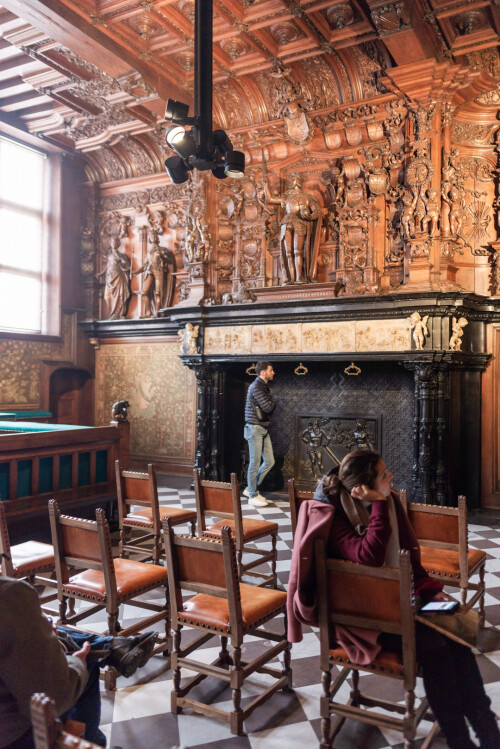Close
The facade of the Brugse Vrije (Liberty of Bruges) on the Burg next to the City Hall catches the eye at once. Lady Justice sparkles in gold on the roof. This is a reference to the function of the building as a law court from 1795 to 1984.
Via the old assize court you enter the courtroom of the Brugse Vrije. Centuries of regal power and jurisdiction are brought together in the huge mantelpiece from 1528. The mantel was a tribute to Emperor Charles V (1500-1558). It is made of oak, marble, and alabaster and was designed by Lanceloot Blondeel. The painting by Gillis Van Tilborch of the 17th century hall gives a good impression of a court session in the courtroom. The setting of the painting has been preserved, so you imagine yourself travelling back in time as you enter.
The Brugse Vrije had been the title of an independent administrative, financial, and judicial section of the County of Flanders since early in the 12th century. The area comprised the region and towns around Bruges, bordered by the North Sea, the Western Scheldt, and the Yser. It had its own municipal council which was based at the Burg, but it had no jurisdiction over the city of Bruges itself. At the end of the 14th century, the Brugse Vrije became the ‘fourth member’ of Flanders, alongside the three major cities of Bruges, Ghent, and Ypres. It was not until 1795 that the Brugse Vrije was abandoned.
Today, Bruges City Records Office is housed in the manor of the Brugse Vrije. Only the aldermen's chamber is part of Musea Brugge. The City Records Office preserves the civic written records, and that makes it a treasure chest for historical research.
Photos: © Femke den Hollander


